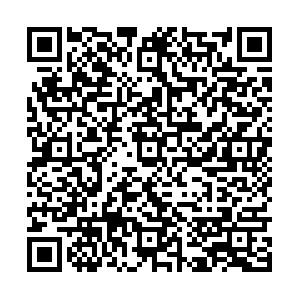Twice-exceptional Students: Recognition, Identification, and Educational Supports
-
摘要: 超常学生通常是具有卓越认知和学习能力的学生,他们中的部分人虽然在某个或某些领域有过人天赋,却同时兼有身心方面的缺陷或障碍。作为潜在的人才资源,若要实现因材施教,需要教育工作者准确把握他们的优势和障碍,运用能克服其障碍、发挥其潜能的教学策略,充分满足其教育需求。本文通过文献梳理,首先描述了双重特殊学生的基本样貌及常见特征,以帮助人们更好地发现和识别这些学生;然后从双重特殊学生的身心特征引出他们学业上面临的诸多挑战;最后从循证实践的理念出发,提出了支持性的教育策略。Abstract: Gifted students are typically those with exceptional cognitive and learning abilities. Among them, some may possess extraordinary talents in one or more specific areas while simultaneously facing physical and mental disabilities and challenges. As potential talent resources, it is crucial for educators to accurately understand their strengths and obstacles,employ teaching strategies that can overcome their barriers and maximize their potential, thereby fully meeting their educational needs. This paper first describes the general profile and common characteristics of twice-exceptional students in the way of narrative literature review, so as to help educators identifying and recognizing these students. Then discusses the various academic challenges they face due to their physical and mental characteristics. Finally, based on the concept of evidence-based practice, it provides some supportive educational strategies for reference.
-
表 1 不同类别双重特殊学生可能表现出来的学习困难与挑战
兼具的障碍类别 学习困难与挑战 学习障碍 健忘、记忆性任务完成困难、阅读技能发展落后、书面或口头组织想法困难、数学技能延迟、口头和书面沟通之间存在明显落差 情绪行为障碍 容易受挫、关注自己的缺陷、低下的自我概念 注意力缺陷障碍 在不喜欢的任务中难以集中或维持注意,杂乱无章 孤独谱系障碍 只专注于自己喜欢的科目、难以建立和维持友谊、缺乏合作行为 表 2 多方协作过程中不同层面需要考虑的因素
成员 考虑因素 超常教育教师 学生的优势有没有充分发展?课程对于学生来说是否显得过于简单?高阶思维技能如何融入学习? 残障教育教师 学生因障碍产生的需求是否得到充分了解和支持?教育目标是否适当?安置是否合理? 普通教育教师 普通教育课堂是否适合学生?分层教学是适当的策略吗?学生如何与同学沟通互动? 家庭/照顾者 家庭如何培育学生社交、情感的发展?
当下是否有影响学生学习表现的家庭事件?
有没有被学校或老师视为有价值且值得尊重的教育伙伴? -
[1] GALTON F. Hereditary genius [M]. London: Macmillan, 1869: 8. [2] GODDARD H H. Psychology of the normal and the subnormal [M]. New York: Dodd Mead, 1919: 58-60. [3] WHIPPLE G M. Classes for gifted children [M]. Bloomington, IL: Public School Publishing, 1919: 94. [4] MAKER C. Providing programs for the gifted handicapped [M]. Reston, VA: Council for Exceptional Children, 1977. [5] National Association for Gifted Children, Council of State Directors of Programs for Gifted. State of the states in gifted education: National policy and practical data [R]. Washington, DC, 2011: 90-94. [6] BARNARD-BRAK L, JOHNSEN S K, POND HANNIG A, et al. The incidence of potentially gifted students within a special education population [J]. Roeper Review, 2015(2): 74-83. [7] RONKSLEY-PAVIA M. An Empirical investigation of twice-exceptional research in Australia: Prevalence estimates for gifted children with disability[Z]. ResearchGate. Unpublished, 2014. [8] MUNRO D R. Gifted learning disabled students [J]. Australian Journal of Learning Disabilities, 2002 (2): 20-30. [9] BAUM S, OWEN S. To be gifted and learning disabled: Strategies for helping bright students with L D, ADHD, and more [M]. Mansfield, CT: Creative Learning Press, 2004. [10] GALLAGHER J. The twice-exceptional dilemma [M]. Washington, DC: National Education Association, 2006. [11] 黄玉浩, 褚朝新. 30年光环褪却超常教育陷入尴尬[J]. 北京纪事(纪实文摘), 2008(3): 18-19. [12] 官群. "双超常教育"刍议[J]. 教育研究, 2009(4): 58-61. [13] CLINE S, SCHWRTZ D. Diverse populations of gifted children [M]. NJ: Mettill, 1999. [14] BALDWIN L, OMDAL S N, PERELES D. Beyond stereotypes: Understanding, recognizing, and working with twice-exceptional learners [J]. Teaching Exceptional Children, 2015(4): 216-225. [15] TRAIL B. Twice-exceptional gifted children: Understanding, teaching, and counseling gifted students [M]. New York: Routledge, 2011. [16] WINEBRENNER S. Teaching Strategies for Twice-Exceptional Students [J]. Intervention in School and Clinic, 2003(3): 131-137. [17] KING E W. Addressing the social and emotional needs of twice exceptional students [J]. Exceptional Children, 2005(1): 16-20. [18] BAUM S M, OLENCHAK F R. The alphabet children: GT, ADHD, and more [J]. Exceptionality, 2002(2): 77-91. [19] RONKSLEY-PAVIA M A. Model of twice-exceptionality: Explaining and defining the apparent paradoxical Ccombination of disability and giftedness in childhood [J]. Journal for the Education of the Gifted, 2015(3): 318-340. [20] KARNES F A, BISLAND A, SHAUNESSY E. Assessing public support for the gifted[J]. Gifted Child Today, 2004(2): 36-39. [21] REIS S M, BAUM S M, BURKE, E. An operational definition of twice-exceptional learners: Implications and applications [J]. Gifted Child Quarterly, 2014(3): 217-230. [22] MAKER C J. Identification of gifted minority students: A national problem, Needed changes and a promising solution [J]. Gifted Child Quarterly, 1996(1): 41-50. [23] KUO C C, MAKER J, SU F L, et al. Identifying young gifted children and cultivating problem solving abilities and multiple intelligences [J]. Learning and Individual Differences, 2010(4): 364-379. [24] SANCHEZ C, IVAN D, GUTIERREZ T. Effectiveness of animal-assisted therapy in the pediatric population: Systematic review and meta-analysis of controlled studies [J]. Journal of Developmental and Behavioral Pediatrics. 2018(7): 580-590. [25] BAUM S M, COOPER C R, Neu T. Dual differentiation: An approach for meeting the curricular needs of gifted students with learning disabilities [J]. Psychology in The Schools. 2001(5): 477-490. [26] BUGENHAGEN D, ANN E. Benefits of animal assisted therapy with children in special education[D]. Minnesota : Bethel University, 2018: 171. [27] WANG C, NEIHART M. Academic self-concept and academic self-efficacy: Self-beliefs enable academic achievement of twice-exceptional students [J]. Roeper Review, 2015(2): 63-73. [28] BARNARD-BRAK L, JOHNSEN S, HANNIG A, et al. The incidence of potentially gifted students within a special education population [J]. Roeper Review. 2015(1): 74-83. [29] BALDWIN L, BAUM S, PERELES D, et al. Twice-exceptional learners: The journey toward a shared vision [J]. Gifted Child Today, 2015(4): 206-214. [30] NIELSEN M E. Gifted students with learning disabilities: Recommendations for identification and programming [J]. Exceptionality, 2002(2): 93-111. [31] REIS S M, BAUM S M, BURKE E. An operational definition of twice-exceptional learners: Implications and applications [J]. Gifted Child Quarterly, 2014(3): 217-230. -

 点击查看大图
点击查看大图
表(2)
计量
- 文章访问数: 122
- HTML全文浏览量: 90
- PDF下载量: 2
- 被引次数: 0



 下载:
下载: